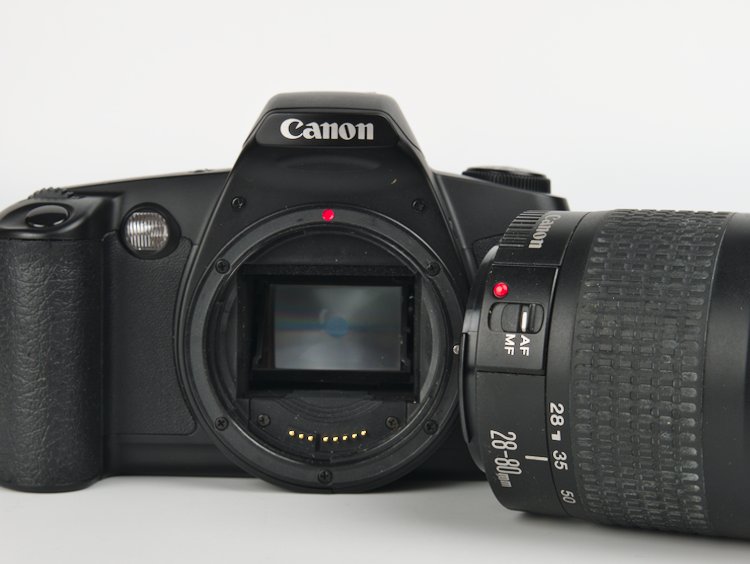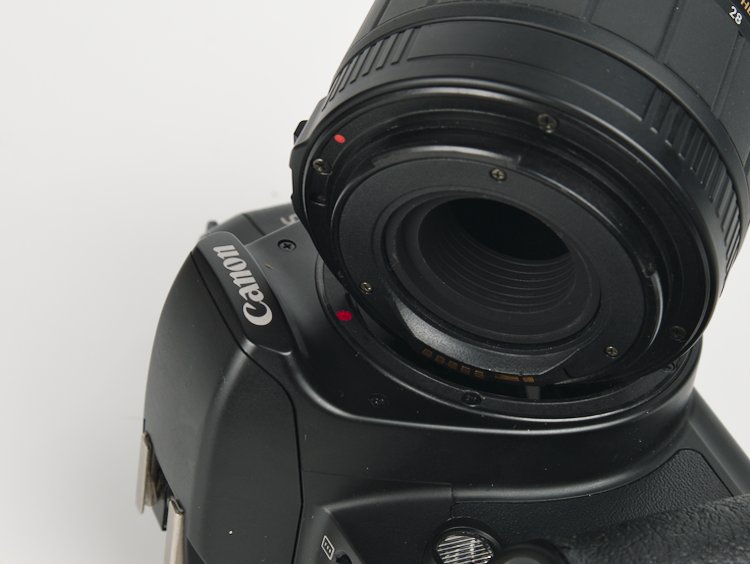Canon EF Lens Mount - From 1987 Until Today

The Canon EF lens mount was introduced in 1987 as a replacement for the Canon FD lens mount. The change to the EF mount was to allow for autofocus capabilities.
The EF stands for “Electro-Focus”. Unlike the previous Canon FD len mount, there are no physical connections between the aperture diaphram and lens mount. The autofocus motor is also electronically controlled.
First 35mm film cameras used the mount and it was also used on Canon’s DSLR cameras. While the Canon EF mount has not been officially discontinued, no new lenses have been released since 2018. This is due to the Canon’s shift from DSLRs to mirrorless interchangeable lens cameras, which use the Canon RF lens mount.
EF Lens Mount Specs

| Lens Mount | Flange Focal Distance | Mount Diameter |
|---|---|---|
| Canon FL | 42.00 mm | 48.00 mm |
| Canon FD | 42.00 mm | 48.00 mm |
| Canon EF (EOS) | 44.00 mm | 54.00 mm |
| Canon RF | 20.00 mm | 54.00 mm |
The Canon EF mount is a bayonet style mount. The inner diameter of the mount is 54mm with a flange distance for 44mm.
Adapting Lenses
The 44mm flange distance is relatively shorter compared to the other 35mm film camera mounts. The shorter distance allows room for adapters to be used to attach lenses with different mounts to a EF camera.
The Canon FD and FL mounts has a flange distance of 42mm. This is why FL and FD lenses cannot easily be adapted to the EF mount.
It is possible to mount Nikon F, Pentax K, Olympus OM, M42 screwmount, Contax/Yashica CY mount, Leica R, and other mounts to a EF camera body.
There are “chipped” adapters that have electrical contacts on them. These are preferred as they will allow focus confirmation to work correctly.
Adapters that have optics should be avoided due to degrading image quality. The optics have to be used when the flange distance is not large enough by mount design or large enough for an adapter to fit.
EF to R Adapters
There is also the benefit of being able to use the EF lenses on mirrorless bodies with the Canon RF mount.
Canon has made 4 different EF to R adapters. These will allow EF lenses to work on mirrorless R series cameras.
The downside is that the adapters are expensive, ranging from $150-$400. They also push the center of gravity farther forward. That can throw off the balance of a camera.
Canon EF 35mm Film Cameras
Possibly apart from some of the Nikon professional camera bodies, the Canon EF 35mm film cameras have the fastest autofocus. Beyond that, the autofocus is comparitively excellent through the entire lineup of Canon cameras.
The launch of the EF mount is what allowed Canon to take marketshare away from Nikon to become the largest camera company. If you want a 35mm film camera with autofocus, Canon is the best option.
Canon EF Digital SLR Cameras
Canon had the largest marketshare of DSLR cameras. They made many excellent cameras, which are still around.
The combined availability of used lenses and camera bodies makes the Canon EOS EF system attractive in terms of price to performance.
Canon EF Lenses
- 192 EF Lenses
- 20 EF Cinema Lenses
- 20 EF-S Lenses
Third Party EF Lenses
Zeiss, Tamron, Tokina, Sigma and other manufacturers also made EF lenses. There are so many lenses available. It is a huge strength to EF system.